How To Allow Chrome To Access The Network In Your Firewall Or Antivirus Settings?
Google Chrome is the most popular browser used by most of the surfers on the internet. Because of its popularity, it can be used for malicious purposes. Therefore, one should take care that it does not pose security risks. As far as security is considered, Google Chrome is virus-free and anyone can use it without any hesitation. However, sometimes your antivirus program or firewall may stop Chrome from accessing the internet and if you can’t access the internet via Chrome, this article will help you to fix this problem so that you can enjoy browsing with Google Chrome again.
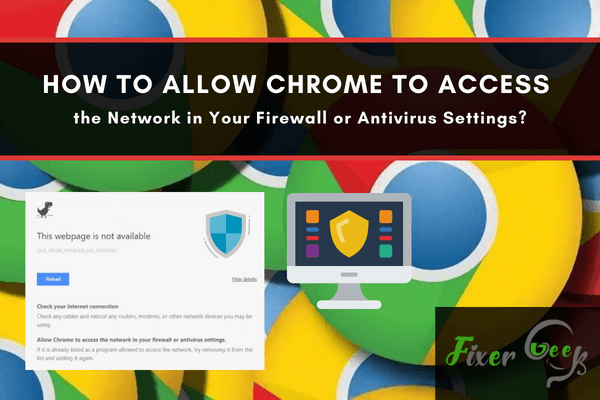
Sometimes while browsing in Google Chrome, we get the error message “Allow chrome to access the network in your firewall or antivirus settings.” This occurs whenever a significant malware-related error is affecting your internet activity. A problem with DNS settings could also cause the error.
We protect our operating system using windows defender, Firewall, or any third-party antivirus software from viruses or malware attacks. Despite all of these measures, antivirus and antimalware applications can sometimes prevent Chrome from surfing the Web. In this scenario, we have to let Chrome access the network in the firewall or antivirus settings, and I’ll explain how to.
Setting a Windows Firewall Exception
Windows firewall is the security mechanism that analyzes and regulates inbound and outbound traffic using security rules. It creates a barrier between a recognized internal network as well as a network that isn’t recognized. It’s not common, but it might block Chrome sometimes from browsing the internet, and here’s how to solve this –
- Open the windows search bar and search for the Firewall. Launch the firewall application.
- Click on the “Allow an app” option on the left sidebar.
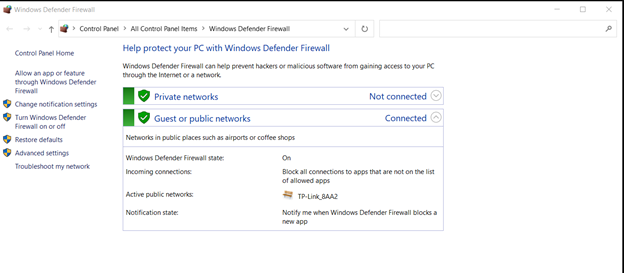
- Find the “Google Chrome” option and mark all the checkboxes for this.

If you’re having trouble implementing the exception, you can alternatively disable the Firewall. To turn it off –
- Launch the Windows Firewall.
- Click on the turn on/off button.
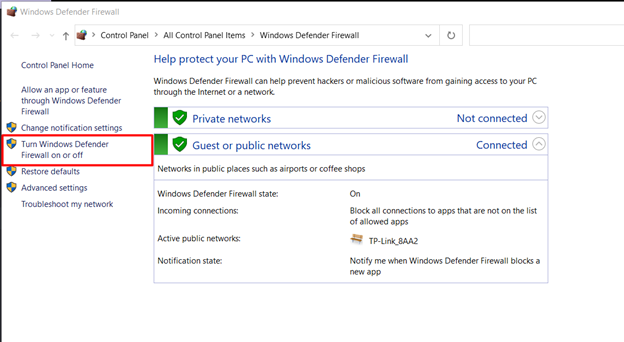
- Mark the checkboxes to disable the Firewall protection. Click “OK” to confirm it.
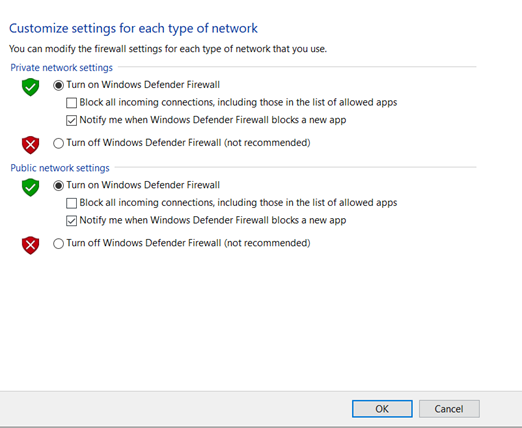
Turning off the Firewall is not a great option because it might let potentially harmful viruses attack your operating system.
Adding Exception to Antiviruses
There are many antivirus software available, and they operate almost in a similar manner. Sometimes they block Chrome from browsing and occurring errors, and to solve this; you’ll have to add the Chrome exception to them. I’ll demonstrate the procedures on McAfee and Kaspersky, and it will work on most antiviruses.
McAfee
- Launch the application and click on the “Settings” option. Navigate to “Firewall.”

- Search for “Google Chrome” under the internet connections section and select it.
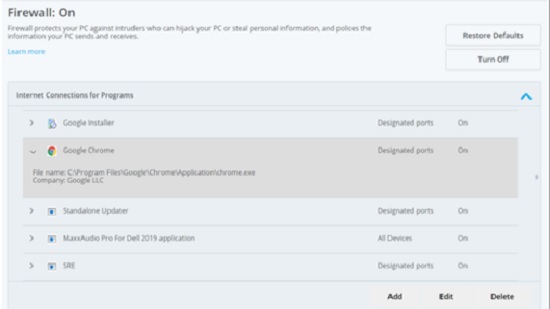
- Now, select “Delete” and click “Yes.”
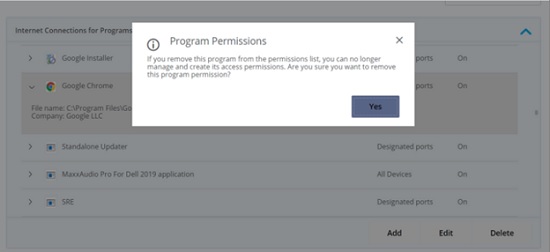
Kaspersky
- Launch the app, then navigate to settings.
- Under the “Protection” window, click “Application Control.”
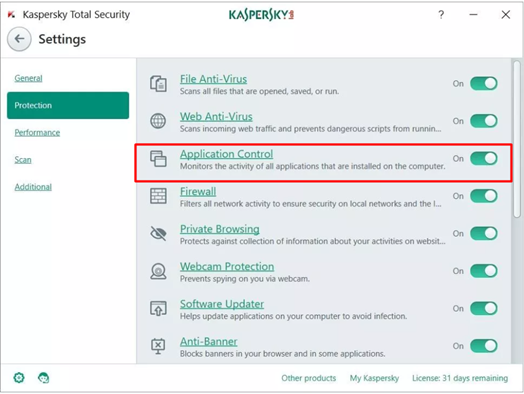
- Select the “Manage application” option.
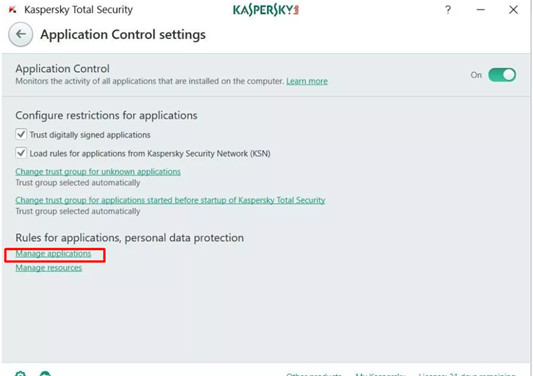
- Click the “Google” option.
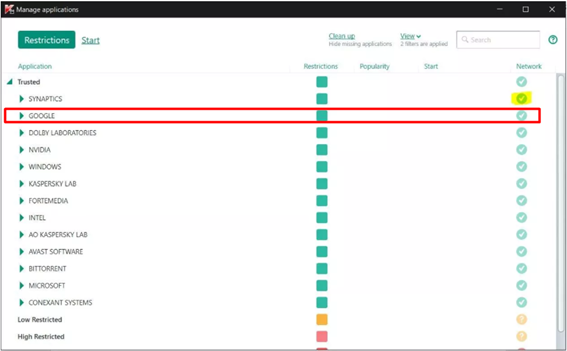
- Find the “Chrome” option and toggle the “Allow” switch for it.
Some third-party antivirus software “Exclusions” option where you can paste the website link that has been blocked. It will give Chrome access to that website.
Adding Exception to Windows Defender
- Go to Windows Settings.
- Under “Update and Security,” open the windows security option.
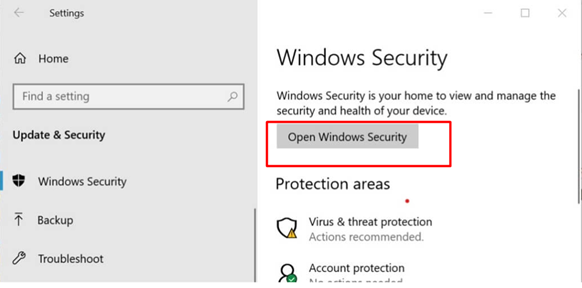
- Select “Virus & threat protection.” Select the “Manage settings” option.

- Select the “Add an exclusion” option. Choose the folder option and navigate to C: Program Files (x86). Find the “Google” folder and select it. Click on “OK” to confirm the changes.
Summary: Allow Chrome to Access the Network in Your Firewall or Antivirus Settings
- Check your antivirus or firewall settings.
- On Windows
- On a Mac
- Sync and Google services.
- Check your antivirus or firewall settings.
- Check your antivirus software settings to ensure that it allows Google Chrome access to the network. If you use a firewall, make sure that it allows Google Chrome to access the network.
- On Windows.
- Click "Start" and select "Control Panel." The Control Panel window appears.
- Double-click "Windows Firewall." The Windows Firewall window appears.
- Click "Allow a Program Through Windows Firewall." The Allowed Programs window appears.
- Click the "Exceptions" tab in the Allowed Programs window. The Exceptions tab opens. Verify that Google Chrome is listed on the screen and enabled (the check box next to it should be checked). If it isn't, click "Add Port," enter "Google Chrome" as the name and click "OK." Ensure that both selections ("TCP" and "UDP") in the Protocols and Ports group are enabled. Close all open windows when you're finished.
- On a Mac.